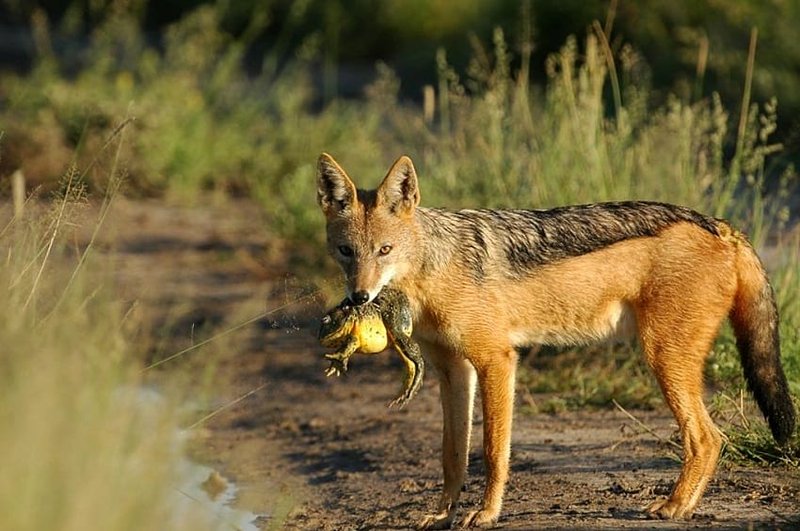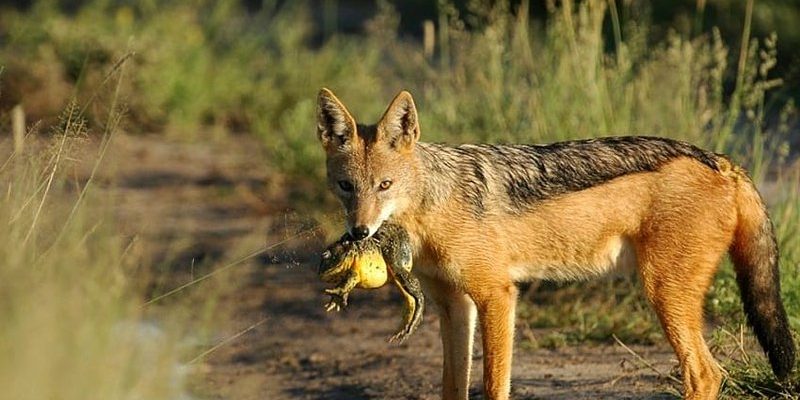
Understanding the diet and hunting methods of the black-backed jackal gives us a window into their survival tactics. Imagine trying to thrive in a world full of competition where every meal counts. The black-backed jackal does just that, and their strategies reflect a mix of opportunism, teamwork, and adaptability.
What Do Black-Backed Jackals Eat?
When it comes to the diet of the black-backed jackal, variety is key. These animals are omnivorous, meaning they feed on a mix of both plants and animals. Their diet isn’t set in stone; it often changes based on what’s available in their environment.
You might wonder, “What exactly do they eat?” Here’s a quick look at some of their favorite foods:
- Small mammals, like rodents and hares
- Birds and their eggs
- Fruits and vegetables, especially during certain seasons
- Insects and carrion (dead animals)
Black-backed jackals are known for their scavenging habits. They often feed on leftover kills from larger predators, like lions or leopards. This behavior helps them conserve energy while still securing a meal. Honestly, these little guys are pretty smart!
The Role of Opportunism in Their Diet
Opportunism plays a big role in how black-backed jackals hunt and eat. They have a flexible approach to finding food. Imagine being invited to a buffet where you can pick and choose whatever you like—this is how jackals treat their environment.
When hunting, their keen sense of smell guides them to potential meals. If they come across a wounded animal or a nest full of eggs, they seize the opportunity. You might be surprised to learn that these jackals can also “team up” with other animals, like vultures. By observing where vultures gather, they can locate carcasses more easily. It’s like having a personal GPS for finding food!
Hunting Strategies of the Black-Backed Jackal
When it comes to hunting, black-backed jackals are quite skilled. They often work alone or hunt in pairs. This teamwork allows them better chances of catching prey, especially when going after larger animals. You could say they embody the saying, “two heads are better than one.”
Their hunting style is a mix of patience and stealth. Jackals typically stalk their prey, getting as close as possible before making a quick dash. This strategy is particularly effective when hunting small mammals. They rely on their excellent hearing to locate their target, listening for the sounds of movement in the grass.
Interestingly, black-backed jackals are also known to use diversion tactics. For example, one jackal may distract a prey animal while the other closes in for the capture. It’s a clever little dance of deception that showcases their intelligence.
Adaptations to Their Environment
Black-backed jackals have several adaptations that help them thrive in various conditions. Their physical traits are fine-tuned for survival. For instance, their sharp, pointed ears help them hear the faintest sounds of prey, while their agility allows them to navigate through rugged terrains easily.
Additionally, their coat coloration—characterized by a distinctive black stripe along their back—provides them with camouflage in their natural habitat. This ability to blend into the environment makes it easier for them to ambush prey or hide from larger predators. You might say their look isn’t just for show; it’s part of their survival toolkit.
Social Structure and Hunting
The social structure of black-backed jackals can vary. They often form monogamous pairs that work together to rear their young and hunt. This family unit dynamic is crucial for their success in the wild.
Within a pack, you might see a hierarchy where certain individuals take the lead in hunting efforts. Here’s the thing: being part of a pack helps them take down larger prey and defend their territory. Plus, it ensures that more mouths are fed, which is especially important when food is scarce.
Each jackal plays a role, whether it’s leading the hunt, watching for danger, or caring for pups. This cooperation enhances their efficiency, allowing them to thrive in an ever-changing environment.
The Impact of Seasonal Changes on Their Diet
Seasons greatly influence the black-backed jackal’s diet and hunting strategies. During the rainy season, there’s typically an abundance of food available. Grass grows tall, and small mammals thrive. This means jackals can fill their bellies relatively easily.
Conversely, during the dry season, food can be scarce. Jackals may have to travel further or expand their diet to include more fruits or even scavenged carcasses. They adapt quickly to changing conditions, showcasing their resilience and resourcefulness.
This adaptability can be a matter of life and death in the wild, where every meal counts. By knowing how to shift their hunting strategies based on the season, black-backed jackals demonstrate their incredible survival skills.
The black-backed jackal is a testament to the ingenuity of wildlife. Their diverse diet and clever hunting techniques allow them to thrive in a competitive environment. By being opportunistic scavengers and skilled hunters, these jackals showcase adaptability that’s crucial for survival.
In essence, black-backed jackals aren’t just survivors; they’re thriving in a world full of challenges. Their ability to change strategies, work together, and adapt to seasonal changes makes them remarkable players in the ecosystem. Next time you think of these clever creatures, remember that they’re more than just quick on their feet—they’re smart, resourceful, and oh-so-fascinating!

